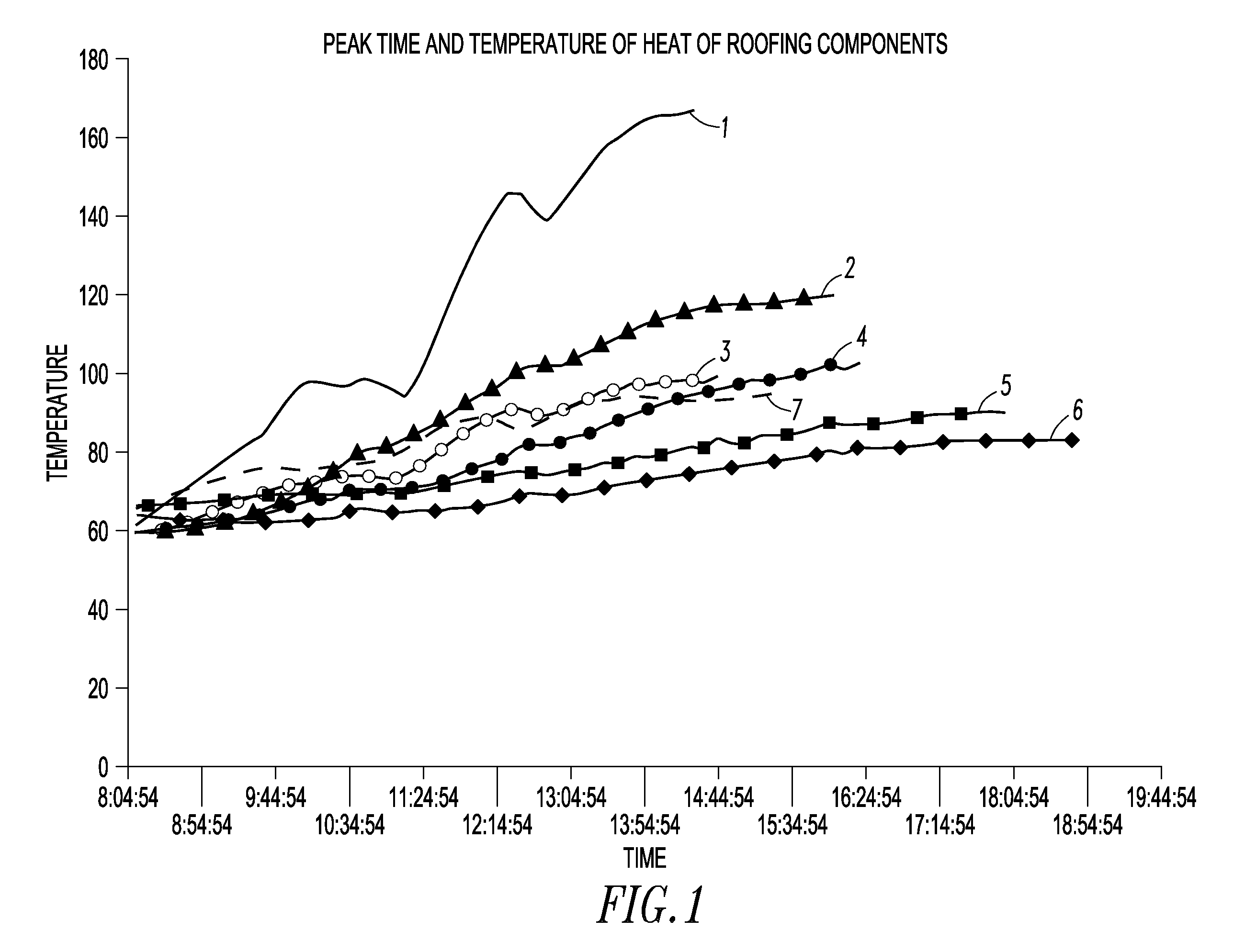Roof paneling system
- Summary
- Abstract
- Description
- Claims
- Application Information
AI Technical Summary
Benefits of technology
Problems solved by technology
Method used
Image
Examples
example 1
[0035]Temperature was measured over time for a number of different roof systems as shown in FIG. 1, including black EPDM sheet 1, a light colored ballast material 2, a reflective white coating 3, a white paver 4, a growing medium 5, and a wet foam 6 of the present invention. For comparison, the ambient air temperature 7 is also provided. As expected, the black EPDM sheet 1 absorbed heat energy and had had a peak temperature over 170 F. A light colored ballast 2 reduced the maximum temperature to only about 120 F, which was still about 25 F above ambient air temperature. Growing medium 5 kept the roof below ambient temperature, but the growing medium adds significant weight to the roof. Wet foam 6 of the present invention held temperature well below ambient temperature and even below that of growing medium 5. Advantageously, wet foam 6 accomplishes this without adding significant weight. Reducing temperature can significantly reduce cooling demand and electrical power requirements.
example 2
[0036]Two identical open-cell, inorganic foams were placed on top of water-impermeable membranes. The membranes comprised EPDM rubber. One foam was saturated with water. The other foam was left dry. Both foams were exposed to solar radiation and the temperatures at the foam-membrane interface were measured. A roof membrane without foam was used as a control. Without either foam, the membrane reached over 160 F in 15 minutes. The interface of the wet foam reached only 82 F. The interface of the dry foam reached 102 F. Wet or dry, the foam significantly reduced the temperature of the roof membrane.
example 3
[0037]The insulation effect of a wet foam was compared to that of a dry foam. Two open-cell inorganic foam blocks were placed 50 cm from a radiant heat source. A first block was dry, and a second block was saturated with water. A control measured the temperature without any block at a location equidistant from the heat source to the underside of the blocks. FIG. 2 shows temperature versus time for the ambient temperature 21, the temperature of the underside of the wet block 22, and the temperature of the underside of the dry block 23. The dry block heated up quickly. The wet block heated up significantly more slowly.
PUM
| Property | Measurement | Unit |
|---|---|---|
| Length | aaaaa | aaaaa |
| Length | aaaaa | aaaaa |
| Length | aaaaa | aaaaa |
Abstract
Description
Claims
Application Information
 Login to View More
Login to View More - R&D
- Intellectual Property
- Life Sciences
- Materials
- Tech Scout
- Unparalleled Data Quality
- Higher Quality Content
- 60% Fewer Hallucinations
Browse by: Latest US Patents, China's latest patents, Technical Efficacy Thesaurus, Application Domain, Technology Topic, Popular Technical Reports.
© 2025 PatSnap. All rights reserved.Legal|Privacy policy|Modern Slavery Act Transparency Statement|Sitemap|About US| Contact US: help@patsnap.com



